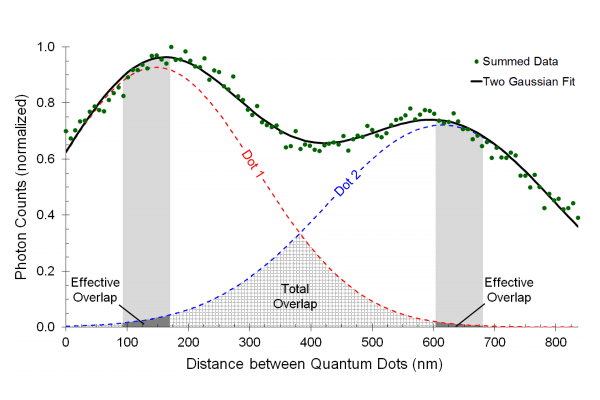Ryan Hefti

Ryan Hefti

Blinking correlation in nanocrystal quantum dots probed with novel laser scanning confocal microscopy methods
Abstract:
Semiconductor quantum dots have a vast array of applications: as fluorescent labels in biological systems, as physical or chemical sensors, as components in photovoltaic technology, and in display devices. An attribute of nearly every quantum dot is its blinking, or fluorescence intermittency, which tends to be a disadvantage in most applications. Despite the fact that blinking has been a nearly universal phenomenon among all types of fluorescent constructs, it is more prevalent in quantum dots than in traditional fluorophores. Furthermore, no unanimously accepted model of quantum dot blinking yet exists.
The work encompassed by this dissertation began with an in-depth study of molecular motor protein dynamics in a variety of environments using two specially developed techniques, both of which feature applicability to live cell systems. Parked-beam confocal microscopy was utilized to increase temporal resolution of molecular motor motion dynamics by an order of magnitude over other popular methods. The second technique, fast-scanning confocal microscopy (FSCM), was used for long range observation of motor proteins. While using FSCM on motor protein assays, we discovered an unusual phenomenon. Single quantum dots seemingly communicated with neighboring quantum dots, indicated by a distinct correlation in their blinking patterns.
In order to explain this novel correlation phenomenon, the majority of blinking models developed thus far would suggest a dipole-dipole interaction or a Coulomb interaction between singly charged quantum dots. However, our results indicate that the interaction energy is higher than supported by current models, thereby prompting a renewed examination. We propose that the blinking correlation we observed is due to a Coulomb interaction on the order of 3-4 elementary charges per quantum dot and that multiple charging of individual quantum dots may be required to plunge them into a non-emissive state. As a result of charging, charge carriers are displaced into a wide distribution of trap sites in the surrounding matrix, resulting in the expected power-law probability distribution of off times ubiquitous in quantum dots. Our discovery also implies that quantum dot blinking can be controlled, advocating the creation of switchable nanoscale emitters.
Sponsoring Chair: Dr. Patrick Moyer
Committee: Dr. Marcus Jones, Dr. Stuart Smith, Dr. Yuri Nesmelov, Dr. Jiancheng Jiang